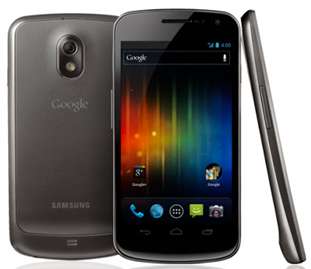The Confusion Around Mobile Data Speeds
November 30, 2011 1 Comment

AT&T's marketing chart correctly places HSPA+ in-between 3G HSPA and LTE when it comes to data speeds.
The History of Faux G
Data speeds can have a huge impact on the perceived speed of your mobile device, but there is much confusion around 4G. For the past year all of the carriers have been running commercials about their 4G networks. Truth be told, until recently, Sprint and Verizon were the only U.S. carriers with true 4G networks and mobile devices to support it.
- T-Mobile was first to call their HSPA+ network 4G and AT&T gave T-Moble grief over it. HSPA stands for “High Speed Packet Access.” Since then AT&T jumped on the same HSPA+ 4G bandwagon. HSPA+ is capable of speeds that are somewhere in-between 3G and 4G LTE. This is why some call it “Faux G.”
- Sprint uses a different technology called WiMAX and was the first to deploy a true 4G network. Their network is capable of speeds that meet or exceed Verizon’s 4G data network. [Update: Sprint just announced they will be coming out with LTE phones in the 2nd half of 2012.]
- Verizon launched their 4G LTE network back in December of 2010.
- AT&T launched LTE in five cities in September 2011 (9 months after Verizon), but didn’t have a single 4G phone until November 2011.
If you’re fortunate to be in one of the 200+ cities with LTE coverage, you’re in for a real treat. LTE is much faster than 3G or HSPA+. How much faster? Verizon claims LTE speeds which are at least twice as fast as AT&T’s 4G HSPA+ and up to 12 times faster than their own 3G speeds. Most LTE users experience real world download speeds of 5 to 12 Mbps and real world upload speeds of 2 to 5 Mbps. These speeds are impressive, but they are conservative. I’ve experienced real world LTE download speeds as high as 45Mbps and upload speeds as high as 28Mbps. Theoretical peak LTE speeds are even higher than these. More info.
The list of smartphones which support LTE today include the Samsung Galaxy Nexus, BlackBerry Torch 9810, Droid Bionic, Droid Charge, Droid RAZR, HTC Rezound, HTC Thunderbolt, HTC Vivid, LG Revolution, Pantech Breakout, Samsung Galaxy S II HD LTE, Samsung Galaxy S II Skyrocket and Samsung Stratosphere. More phones are being added to this list every month. The list of tablets which support LTE today include the Motorola Xoom, Motorola Droid XYBOARD(8.2″ and 10.1″), Samsung Galaxy Tab 8.9, and Samsung Galaxy Tab 10.1. Why isn’t the iPhone 4S listed here? Unfortunately, LTE support isn’t yet available on the iPhone or iPad yet.
Trouble in Paradise?
There are two downsides with LTE that you should be aware of:
- LTE phones consume power faster than non-LTE phones. For this reason, in the past some people disable 4G when they weren’t using it. Fortunately most newer phones have more powerful batteries which make this less of an issue.
- LTE isn’t available everywhere, and even if you live in a city that has it, you may not always be able to get a 4G signal.
Wi-Fi data speeds are important as well. The best mobile devices support dual-band Wi-Fi. That means they work on both 2.4 GHz and 5.0 GHz Wi-Fi networks. 5.0 GHz networks are less crowded and capable of higher speeds. You can learn more about 5 GHz and view a list of devices which support it here. Some new mobile devices also include support for Bluetooth 4.0, which promises better range and lower energy consumption.
After reading this, you should be better prepared to evaluate the carriers confusing marketing messages about mobile data speeds. If data speeds are important to you, it’s essential all of your mobile devices support either LTE or WiMAX.
My next post will be about Rhapsody’s new cloud-based music service. You can read about that here.
Copyright 2011 Rick Schwartz. All rights reserved. Linking to this article is encouraged.

Pingback: Everything You Need to Know About 4G « Mostly-Tech